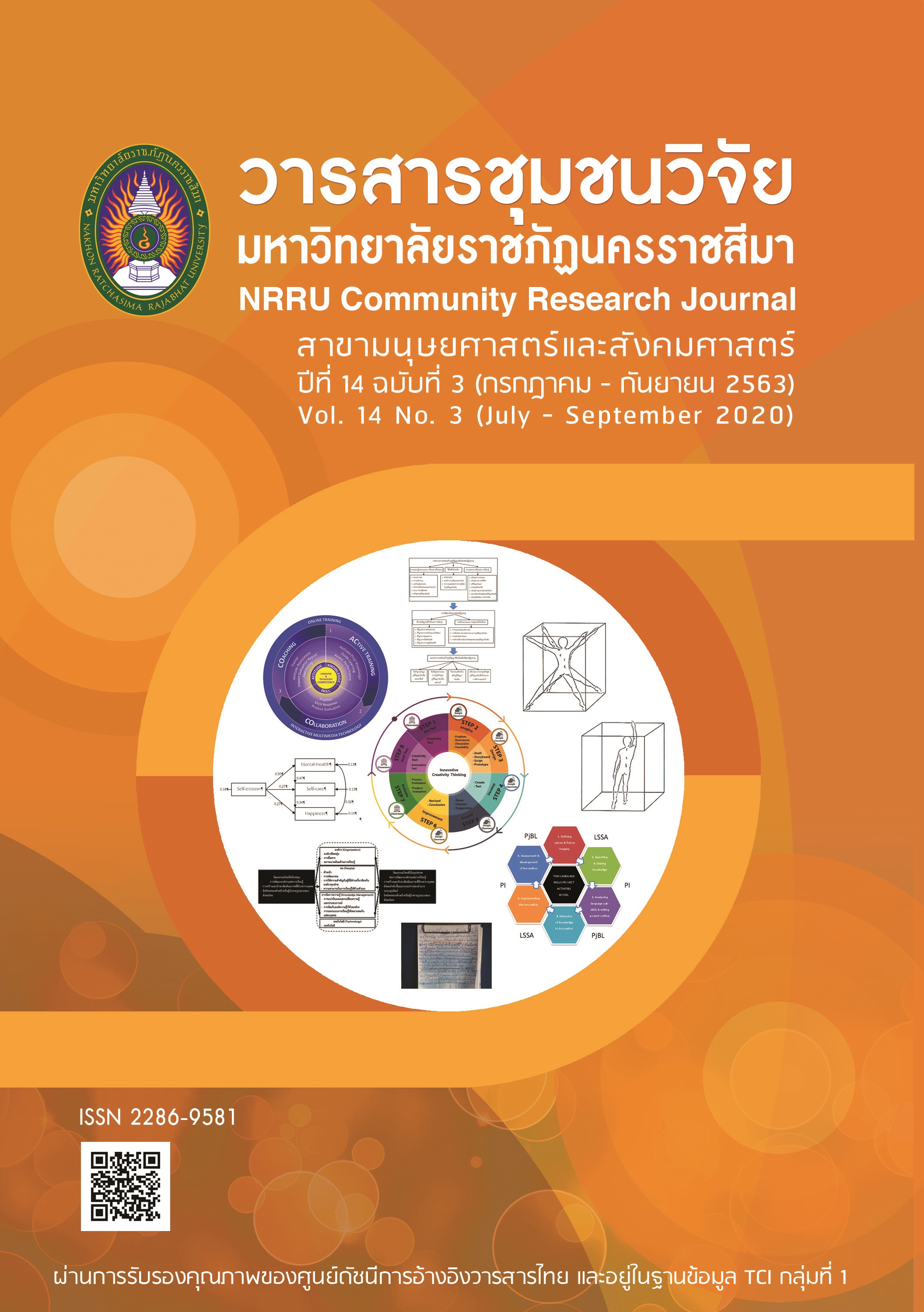AN ANALYSIS OF AGRICULTURAL HOUSEHOLD’S MEAT CONSUMPTION EXPENDITURE PATTERN IN THE NORTHEAST OF THAILAND IN 2017
DOI:
https://doi.org/10.14456/nrru-rdi.2020.49Keywords:
Consumption expenditure pattern, Agricultural household, Almost Ideal Demand System (AIDS) ModelAbstract
The objective of this research was to study the factors affecting the pattern and the estimation of agricultural households’ meat consumption expenditure in the northeast of Thailand. The data was drawn from the National Statistical Office of Thailand. The researchers used the economic survey in the northeast region in 2017 as the study group. The analysis used in the study was the Almost Ideal Demand System (AIDS) to estimate the Engel Curve equation by using the ordinary least squares (OLS) technique.
The study found that the pattern of agricultural households’ meat consumption expenditure in the northeast of Thailand varied due to different factors, including sex, age, educational background, and marital status of the head of the household, as well as geographic location of the household, including whether a household was inside or outside the municipality and the Province. The analysis of the responses to the households’ meat consumption expenditure in 2017 showed that the elasticity of household meat consumption expenditure in the meat and poultry section and the fish and aquatic animal section was both greater than 1. This implied that meat was a luxury good. In addition, the responses of households outside the municipality to the income and meat consumption expenditure was higher than the responses of households inside the municipality. That is, the households outside the municipality would consume a higher volume of meat as their income increased.
References
Chesher, A., & Rees, H. (1987). Income Elasticities of Demands for Foods in Great Britain. Journal of Agricultural Economics, 38(3), 435-448.
Deaton, A, & Muellbauer J., (1980). An Almost Ideal Demand System. American Economic Review, 70(3), 312-326.
Gius, M. P. (2005). An Estimate of the Effect of Age, Taxes, and Other Socioeconomic Variables on the Alcoholic Beverage Demand of Young Adults. The Social Science Journal, 42(1), 13-24.
Kaewton, B. (2003). The Elasticities of Meat Demand. Thesis, Master of Economics degree in Economics, Faculty of Economics, Ramkhamhaeng University, Bangkok. (In Thai)
Khunthongjan, S. (2014). Income Pattern and Family Allowance of Household Rice Farmer For Balance the Living: Ubon Ratchathani. Project Series "Agricultural Policy Research and Strengthening Policy Research Network. The Thailand Research Fund (TRF), Bangkok. (In Thai)
Masawas, P., Sirisupaluxana, P., & Bunyasiri, I., (2016). Factors Affecting Food Security of Thai Agricultural Households. VRU Research and Development Journal Humanities and Social Science, 11(2), 347-356. (In Thai)
Narakorn, P., Phiriyakun R., & Thongprayoon, W. (2012). Factors Determinants the Domestic Supply and Demand of Pork in Thailand. Journal of Management and Science. Faculty of Management Science, Lampang Rajabhat University, 5(1), 63-70. (In Thai)
National Statistical Office. (2018). Member and household expenditure survey 2017. Bangkok : Population and Housing census, Office of Economic and Social Statistics. (In Thai)
Nonthaphut, S. (2016). Consumer’s Behaviors on Pork Consumption in Hatyai Municipality, Songkhla Province.
Minor Thesis, Master of Business Administration degree in Faculty of Business Administration, Prince of Songkla University, Songkla. (In Thai)
Office of Agricultural Economics (2017). Household and Agricultural Workers Socio-economic Survey, 2016/17. Retrieved January 12, 2020, from http://www.oae.go.th/view/1/เอกสารเผยแพร่/TH-TH (In Thai)
Office of the National Economic and Social Development Council. (2017). Database and indicators of social conditions. Retrieved January 12, 2020, from http://social.nesdc. go.th/social/Default.aspx?tabid=125&articleType=ArticleView&articleId=204 (In Thai)
Phusuwan, P. (1994). Analysis of demand for beef and buffalo consumption in Thailand. Thesis, Master of Economics degree in Economics, Faculty of Economics, Krirk University, Bangkok. (In Thai)
Phutphong, C. (2001). An analysis of expenditure patterns for meat consumption of households in Thailand. Thesis, Master of Science degree in Agricultural Economics Program, Kasetsart University, Bangkok. (In Thai)
Prachanai, S. (2009). Factors Affecting Supply and Demand for Beef Cattle in Thailand. Thesis, Master of Science degree in Agricultural Economics Program, Kasetsart University, Bangkok. (In Thai)
Siripongpairote, S. (2004). Behaviors and Dominating Factors in Buying Pork in Amphoe Muang, Changwat Nakhon Pathom. Thesis, Master of Science degree in Business Economics Program, Kasetsart University, Bangkok. (In Thai)





